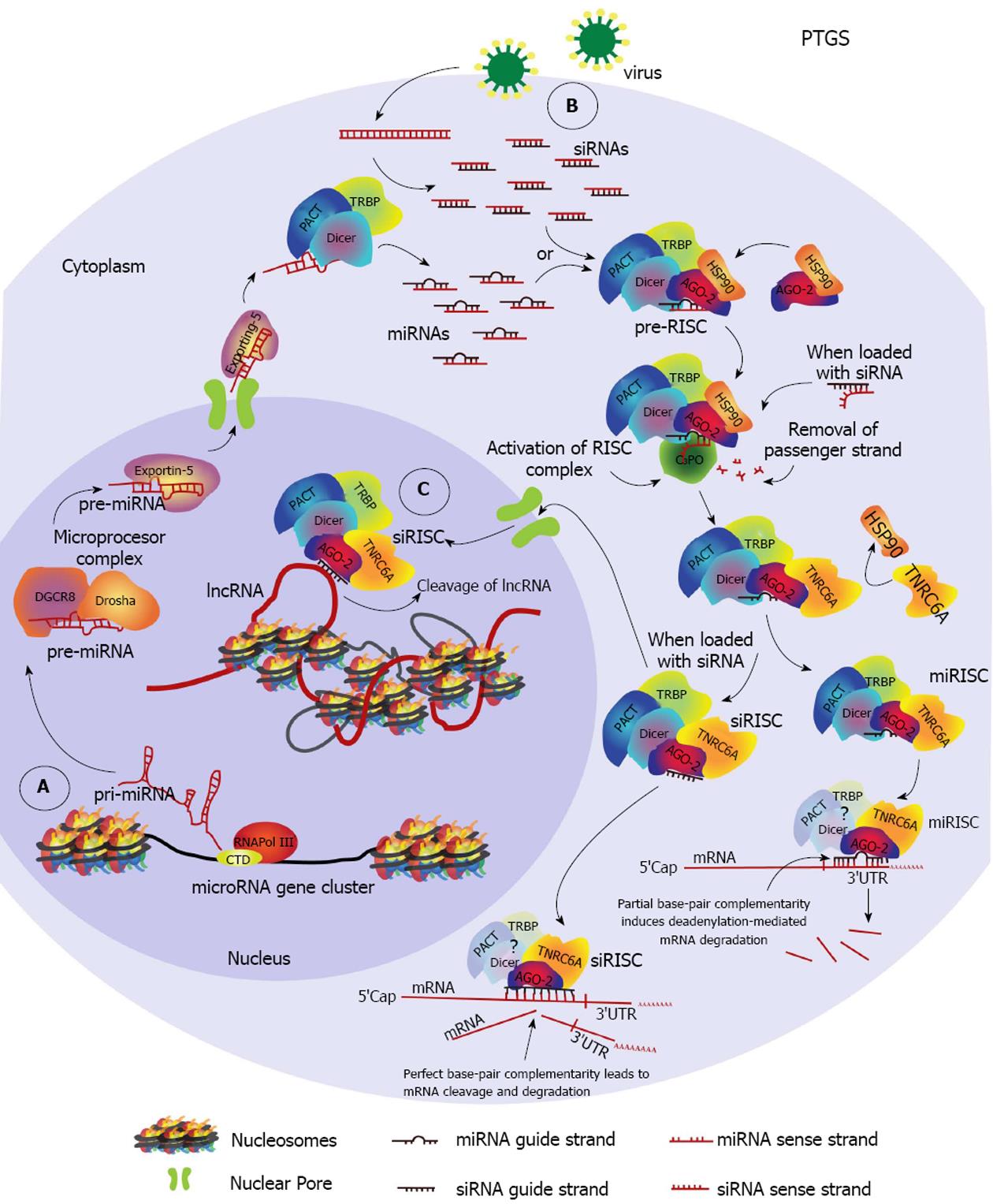Copyright
©The Author(s) 2015.
World J Virology. Aug 12, 2015; 4(3): 219-244
Published online Aug 12, 2015. doi: 10.5501/wjv.v4.i3.219
Published online Aug 12, 2015. doi: 10.5501/wjv.v4.i3.219
Figure 1 Cytoplasmic and nuclear post-transcriptional gene silencing pathways.
A: A primary-microRNA (pri-miRNA) is transcribed by the RNA Polymerase III (RNA Pol III) from a miRNA gene cluster. The pri-miRNA is then processed by the microprocessor complex into the precursor-miRNA (pre-miRNA) which is exported to the cytoplasm by exportin-5. In the cytoplasm, dicer in complex with Tar-RNA-binding protein (TRBP) and protein kinase R activator of transcription (PACT), process the pre-miRNA into miRNA duplexes. MiRNA duplexes are ioaded into argonaute (AGO) proteins 1-4 with help from heat shock protein 90 (HSP90), forming the miRNA pre-RNA-induced silencing complex (pre-miRISC). The pathway is shown for AGO-2. The pre-RISC complex is activated after removal of the passenger strand from the duplex by C3PO, becoming the miRISC. TNRC6A becomes part of the complex. MiRISC finds a target region within the 3’UTR of an mRNA and induces deadenylation-dependent mRNA degradation; B: During viral infections double-strand RNA (dsRNA) intermediates of viral replication are processed by DICER/TRBP/PACT and are loaded into AGO-2 to form the siRISC complex after removal of the passenger strand. Complete complementarity between the guide strand siRNA and the target region induces cleavage of the targeted mRNA. MiRNAs can also induce mRNA cleavage if this condition is satisfied; C: A nuclear post-transcriptional gene silencing pathway can occur when an activated siRISC is imported into the nucleus and identifies a target within a nuclear RNA such as a Long-non-coding-RNA (lncRNA) resulting in cleavage of the RNA molecule.
- Citation: Méndez C, Ahlenstiel CL, Kelleher AD. Post-transcriptional gene silencing, transcriptional gene silencing and human immunodeficiency virus. World J Virology 2015; 4(3): 219-244
- URL: https://www.wjgnet.com/2220-3249/full/v4/i3/219.htm
- DOI: https://dx.doi.org/10.5501/wjv.v4.i3.219









